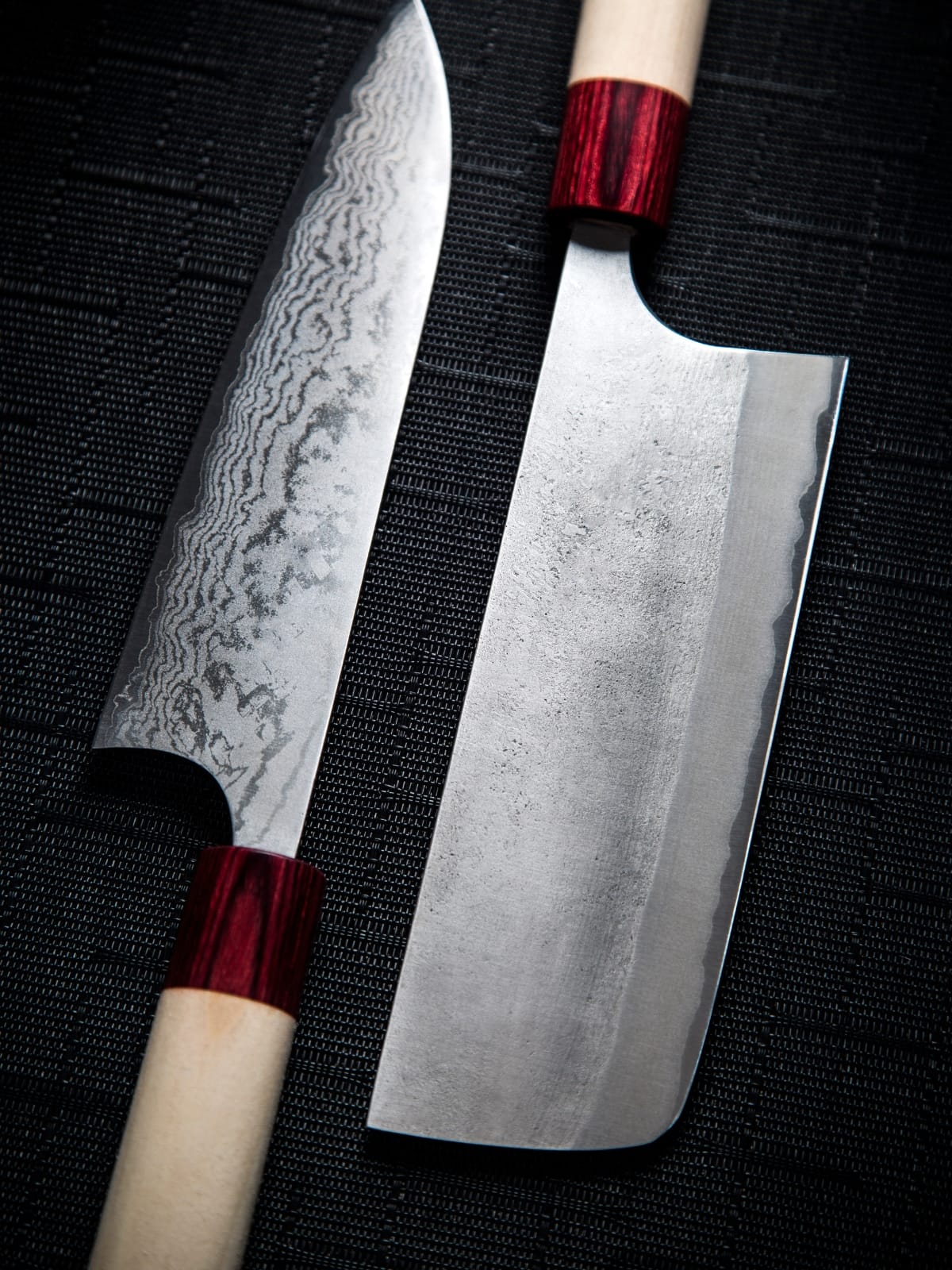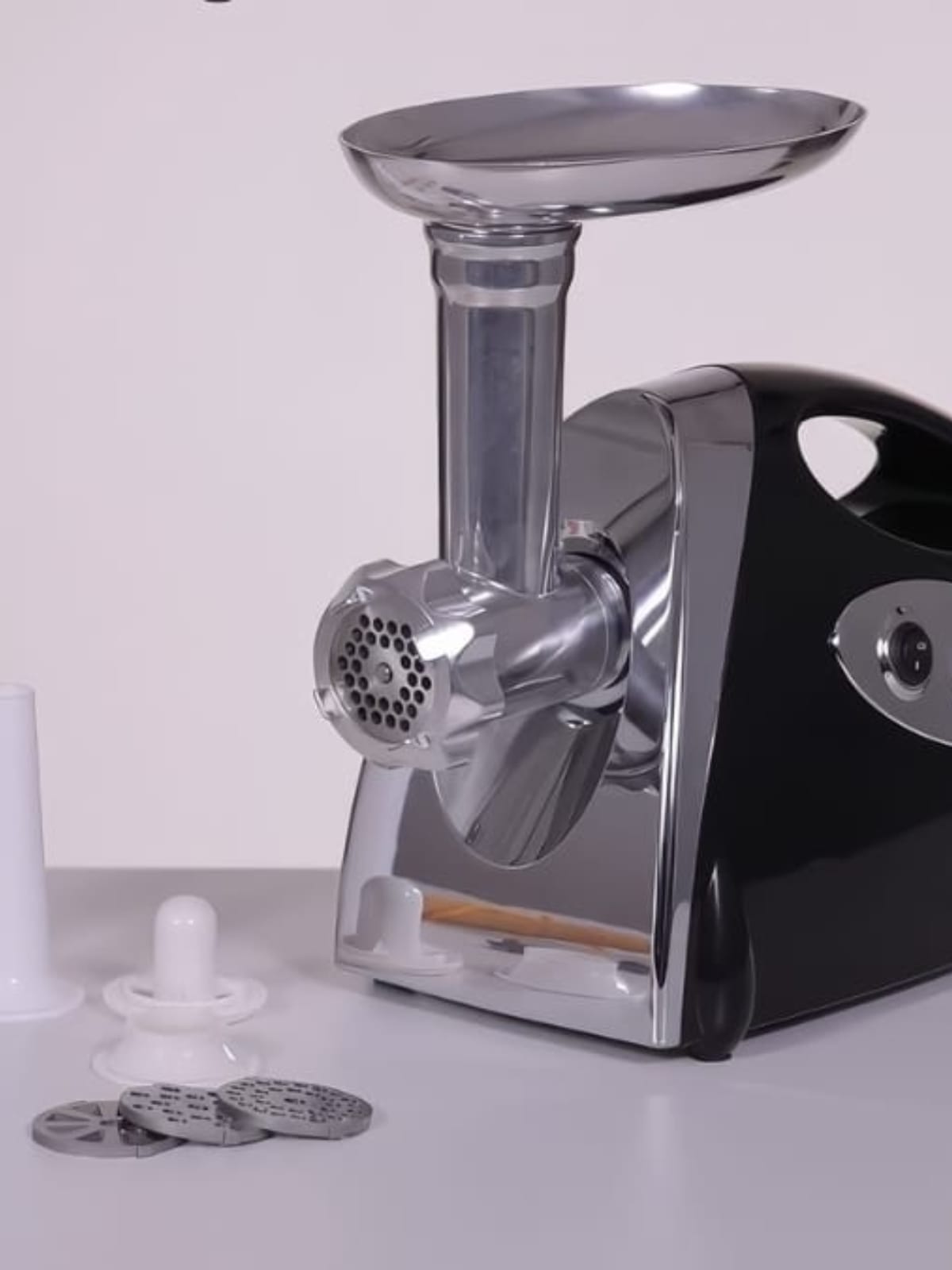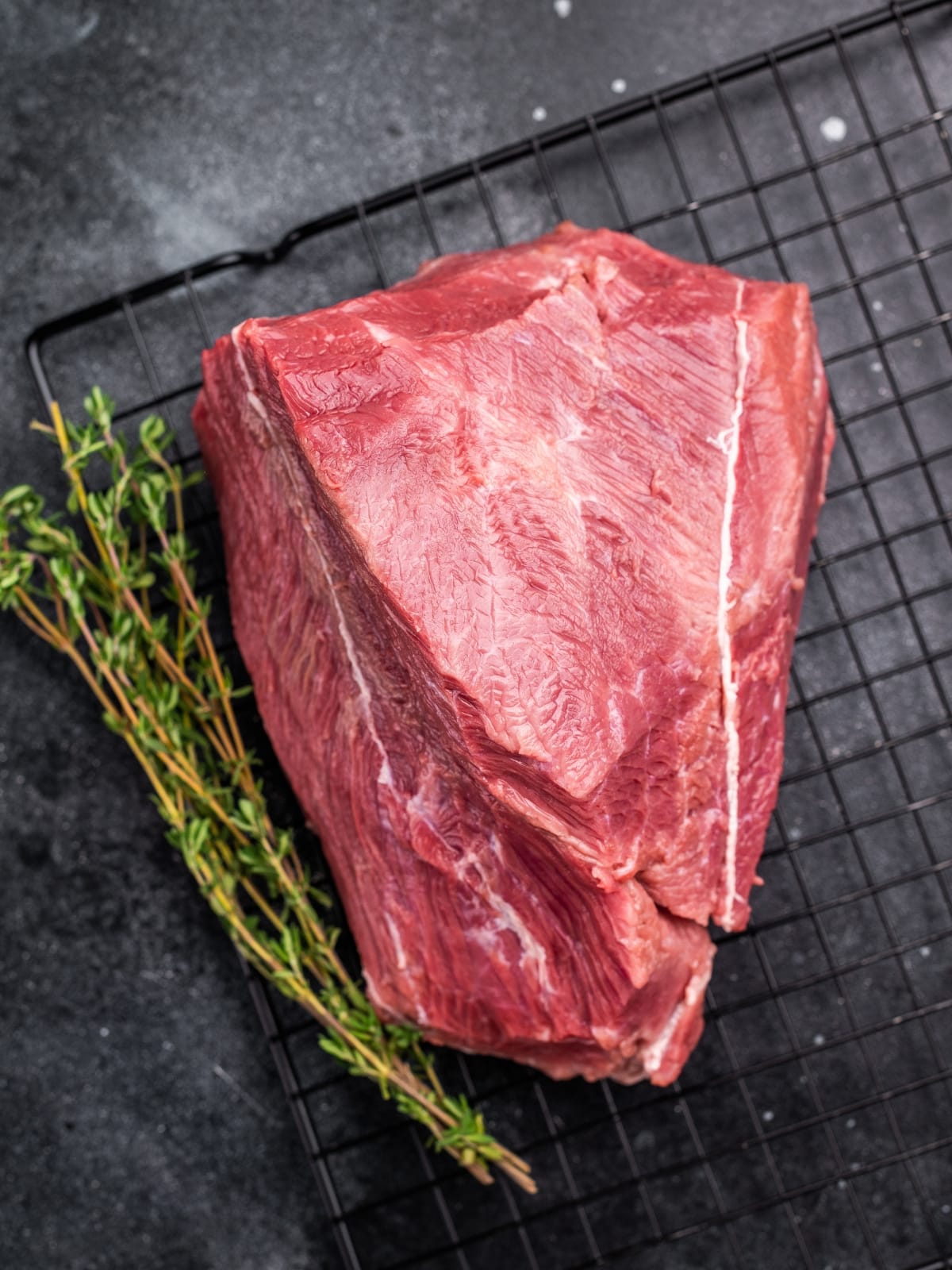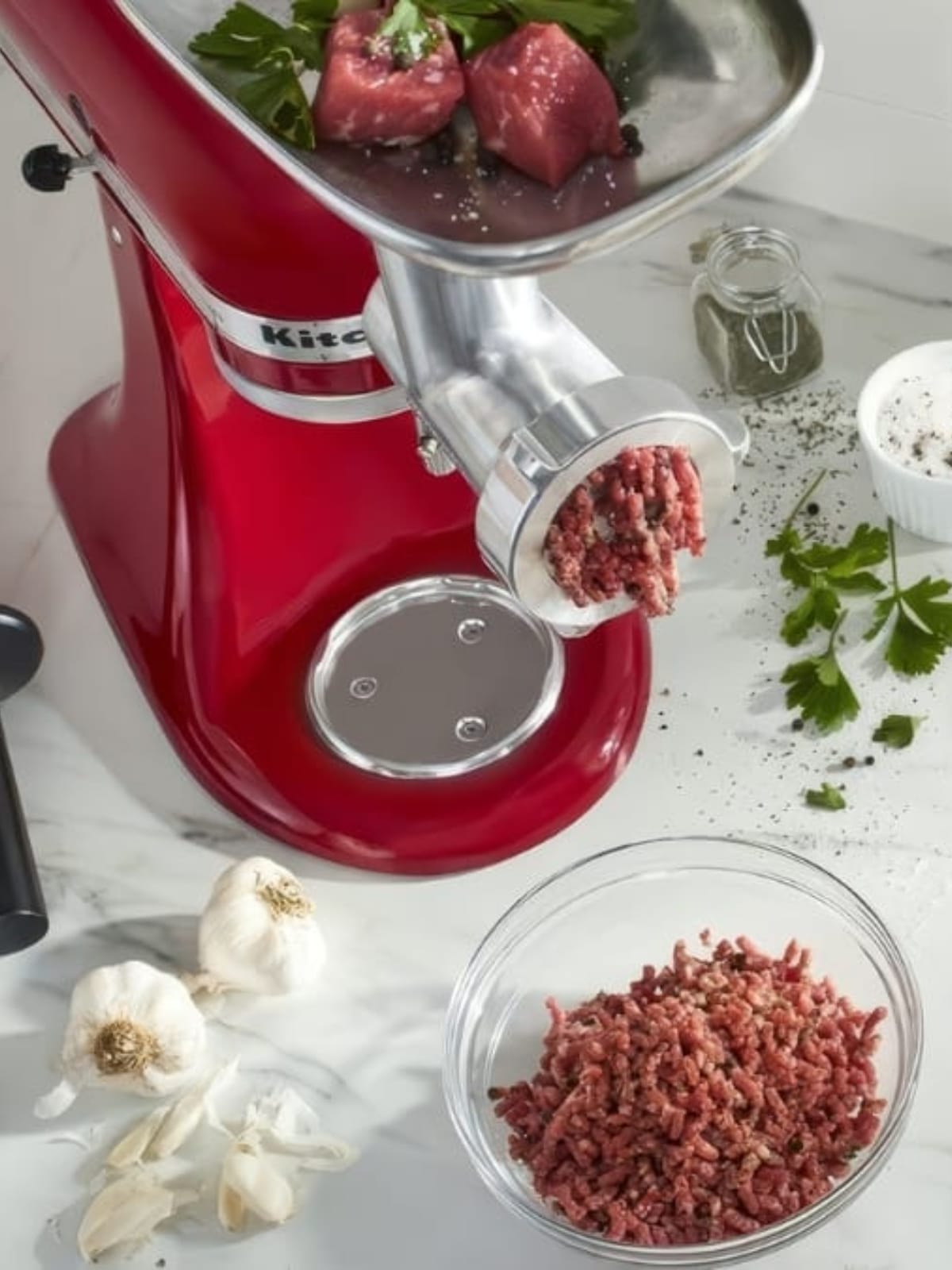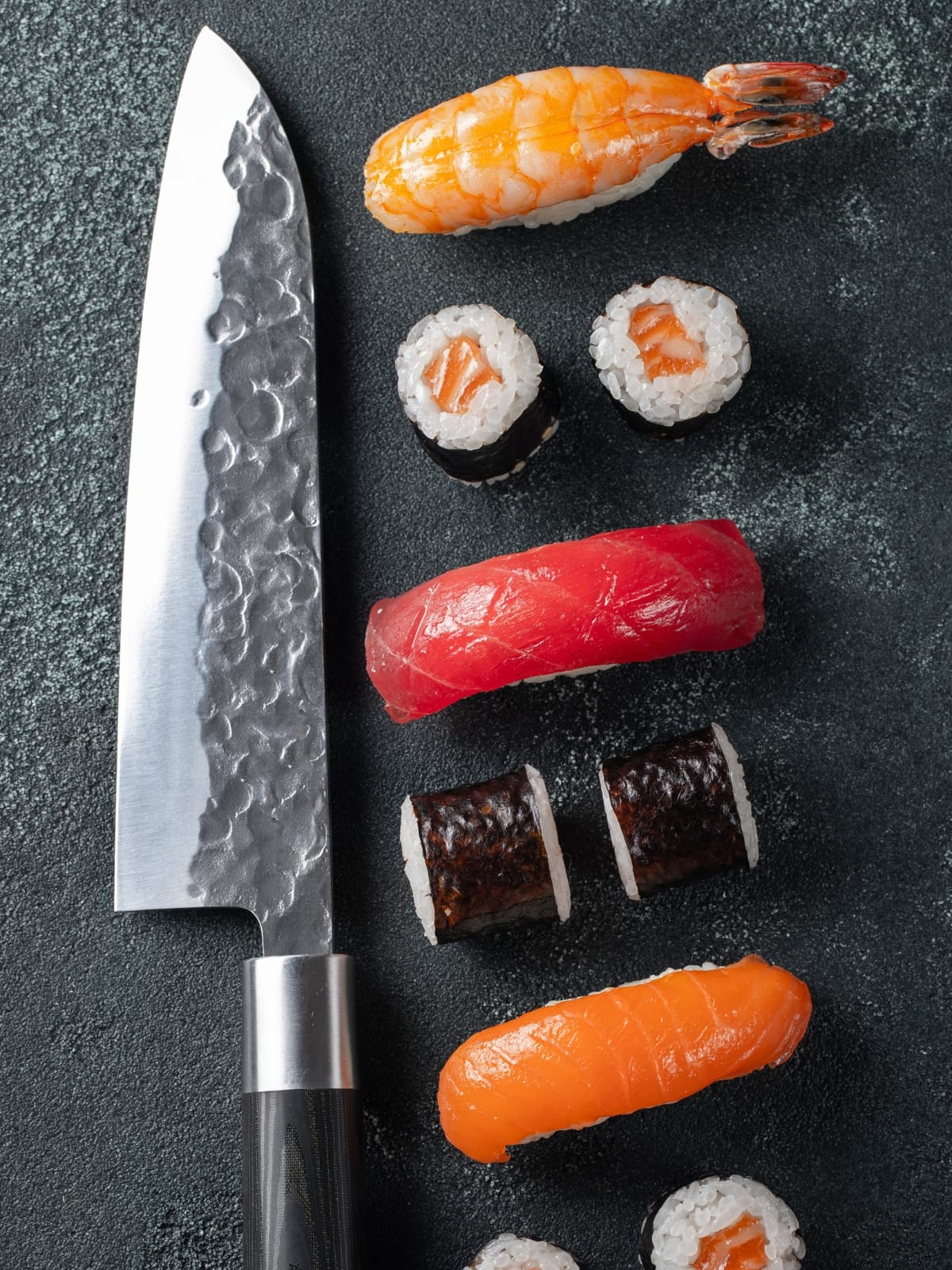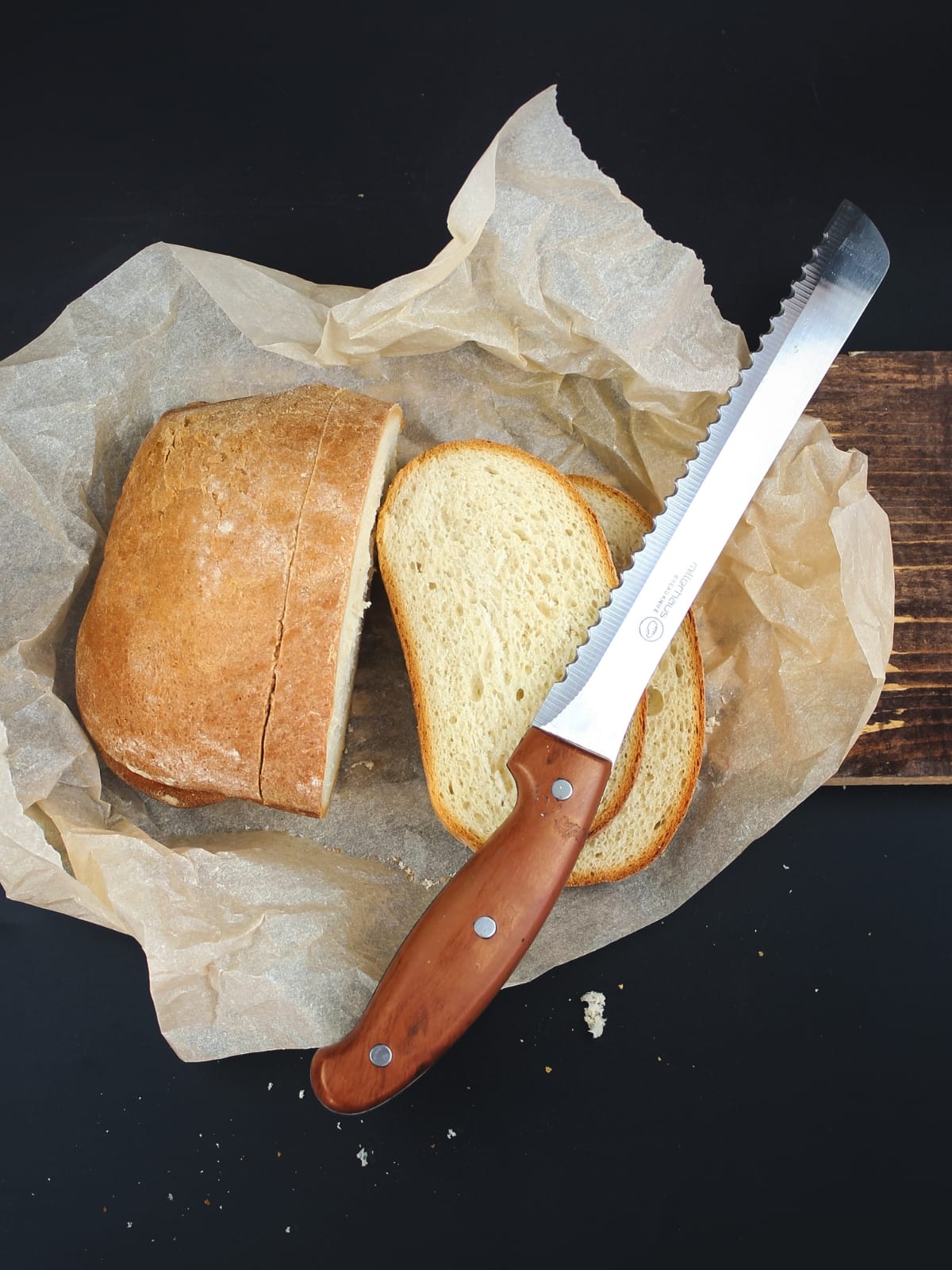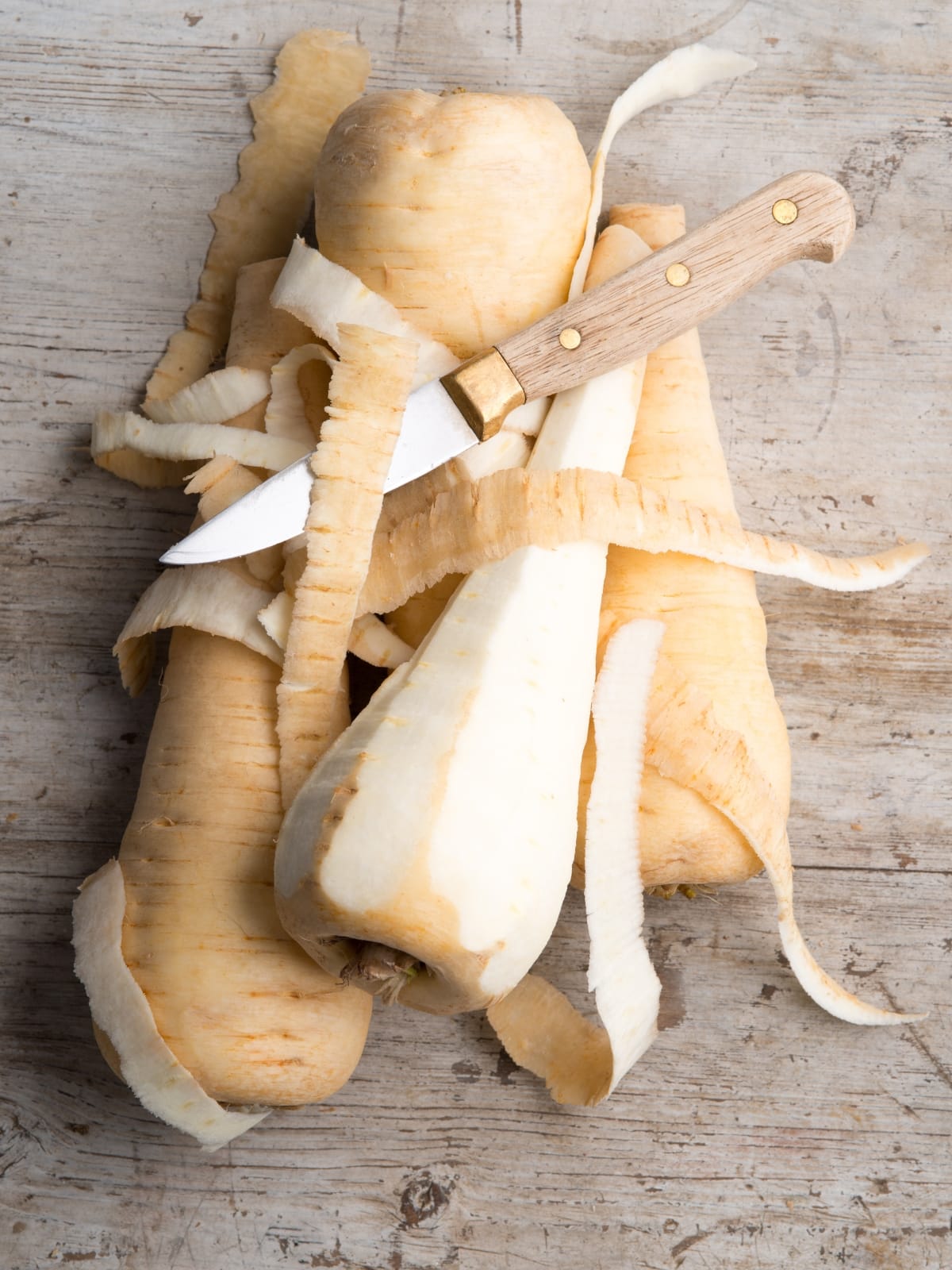Japanese kitchen knives are renowned for their exceptional craftsmanship, razor-sharp edges, and versatility. This comprehensive guide explores the fundamental types of basic Japanese kitchen knives, their uses, and how to select and care for these essential tools in your kitchen. Whether you’re a professional chef or a home cooking enthusiast, understanding the basics of Japanese kitchen knives will elevate your culinary skills.
The Artistry of Japanese Knives
Japan boasts a rich history of knife-making that dates back centuries. The tradition of crafting high-quality blades began with sword-making in ancient Japan and evolved into the art of creating exceptional kitchen knives. Japanese blacksmiths and artisans have perfected the techniques of forging, layering, and tempering steel to produce knives that are not only incredibly sharp but also beautifully balanced and durable.
In Japanese cuisine, the use of fresh, seasonal ingredients and precise cutting techniques is paramount. The right knife is essential for executing delicate slices, clean cuts, and maintaining the integrity of ingredients. Japanese chefs take great pride in their knife skills and consider their knives as extensions of their hands.
This guide will introduce you to the most common basic Japanese kitchen knives, including the gyuto, petty, nakiri, deba, and santoku. By understanding the unique characteristics and uses of each knife, you’ll be better equipped to select the right tools for your kitchen and elevate your culinary creations to new heights.
Types of Basic Japanese Kitchen Knives
Gyuto (Chef’s Knife)
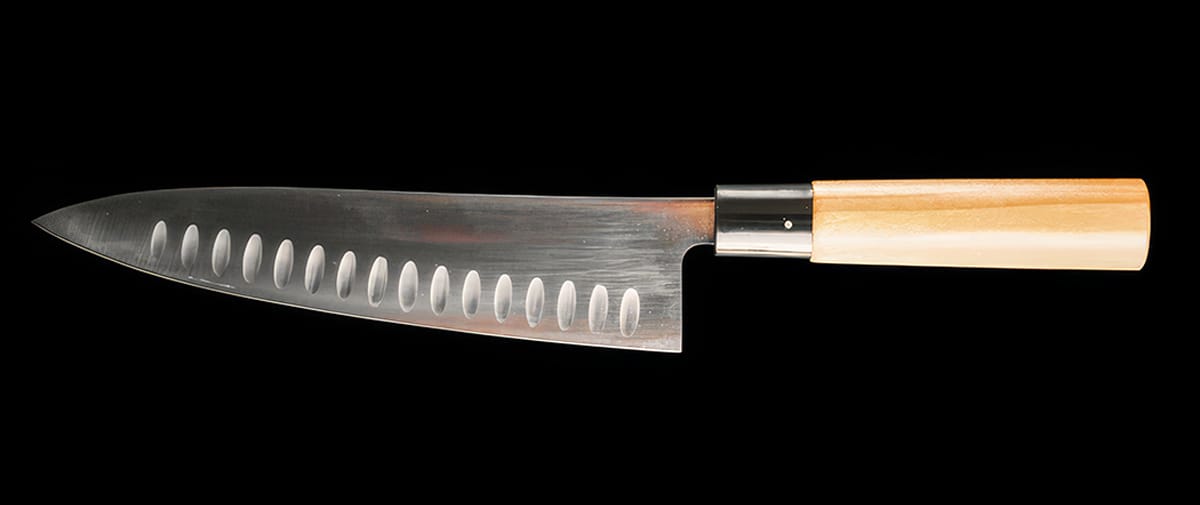
The gyuto, also known as the Japanese chef’s knife, is a versatile all-purpose knife that is essential in any kitchen. It features a long, slender blade that typically ranges from 180mm to 270mm in length. The blade has a gentle curve that allows for a rocking motion when chopping, making it ideal for a wide range of tasks such as slicing, dicing, and mincing.
Gyuto knives are known for their acute angle of sharpness, which allows for precise and clean cuts. The blade is usually thinner than Western-style chef’s knives, resulting in less wedging and easier slicing through ingredients. Gyuto knives are available in various blade profiles, from flatter shapes for push-cutting to more curved designs for rock-chopping.
Some popular gyuto knife recommendations include:
- Shun Classic 8″ Chef’s Knife – A beautifully crafted knife with a VG-MAX steel core and 68 layers of Damascus cladding.
- MAC Knife Professional 8″ Chef’s Knife – A favorite among professional chefs, known for its exceptional sharpness and durability.
- Tojiro Japan 8.2″ Chef’s Knife – An excellent value option with a VG-10 steel core and stainless steel cladding.
Petty (Utility Knife)
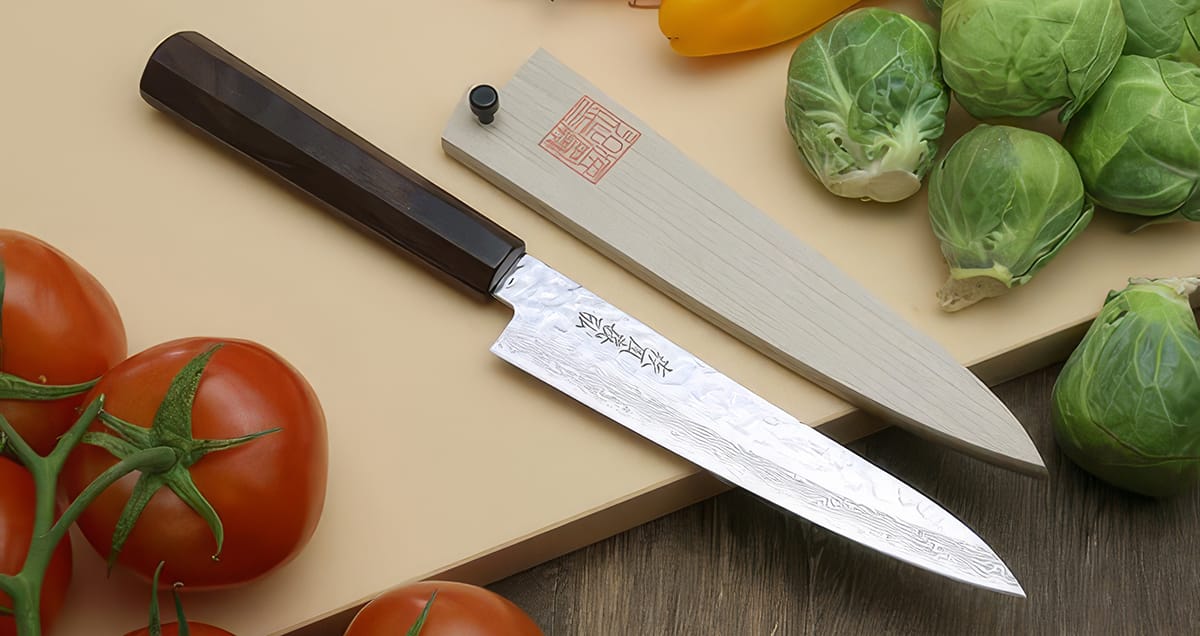
The petty knife, or utility knife, is a smaller, more nimble version of the gyuto. It typically measures between 120mm and 180mm in length, making it perfect for precise tasks such as trimming vegetables, peeling fruit, and preparing garnishes.
Petty knives are often compared to Western paring knives, but they have a slightly longer blade and a more acute angle of sharpness. This allows for greater control and precision when handling smaller ingredients. The petty knife is an indispensable tool for any chef who values attention to detail and finesse in their knife work.
Nakiri (Vegetable Knife)
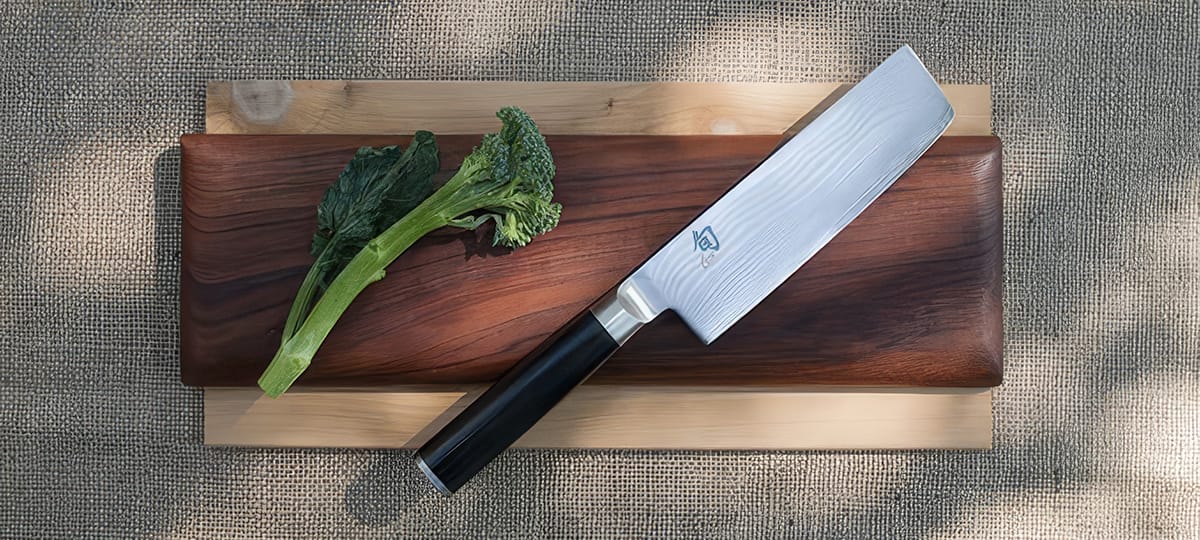
The nakiri is a specialized vegetable knife that is instantly recognizable by its rectangular, cleaver-like blade. The blade is typically thin and wide, with a straight edge that is ideal for chopping, slicing, and dicing vegetables.
Unlike Western-style cleavers, the nakiri is designed for precision cutting rather than heavy-duty chopping. The squared-off blade allows for a clean, downward cutting motion that preserves the integrity of delicate vegetables. The nakiri is a favorite among vegetarians and chefs who work with a lot of plant-based ingredients.
Deba (Fish Filleting Knife)
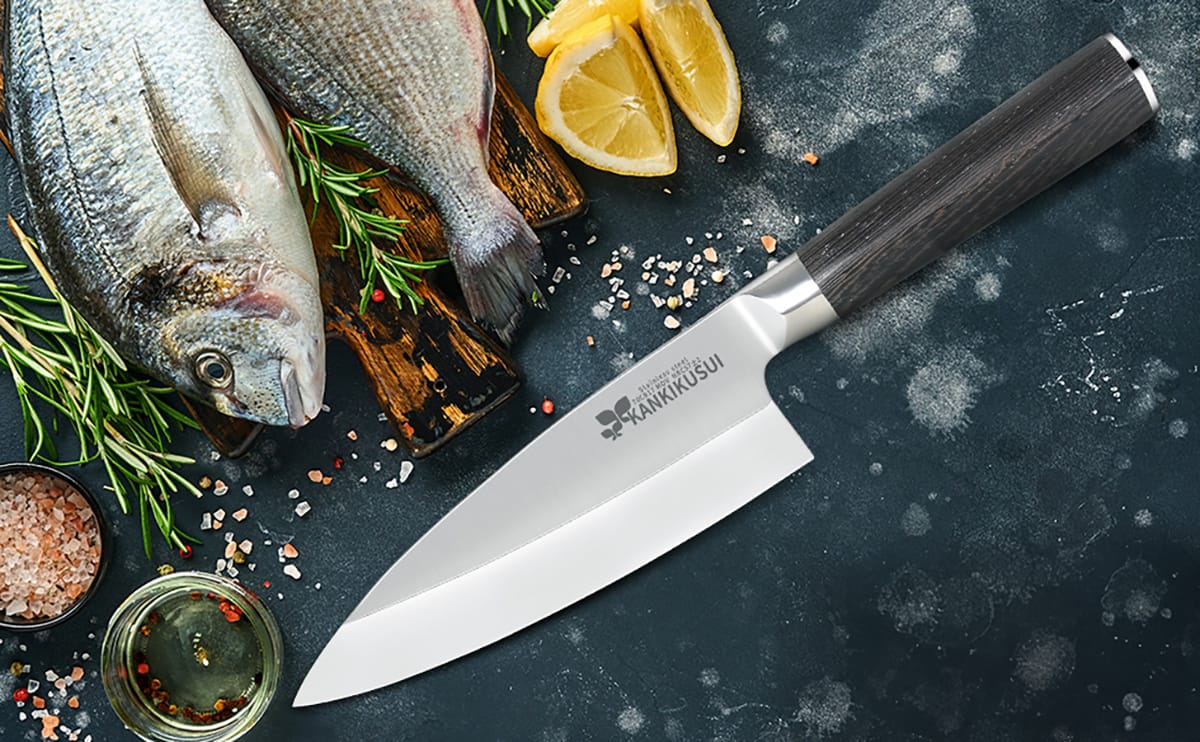
The deba is a thick, sturdy knife designed specifically for breaking down whole fish. It features a heavy, single-bevel blade that is sharpened on only one side, allowing for precise filleting and bone removal.
Deba knives come in various sizes to accommodate different types of fish, from small mackerel to large tuna. The deba’s thick spine and tapered blade provide the necessary strength and control for cutting through fish bones and separating fillets from the carcass.
Santoku (All-Purpose Knife)
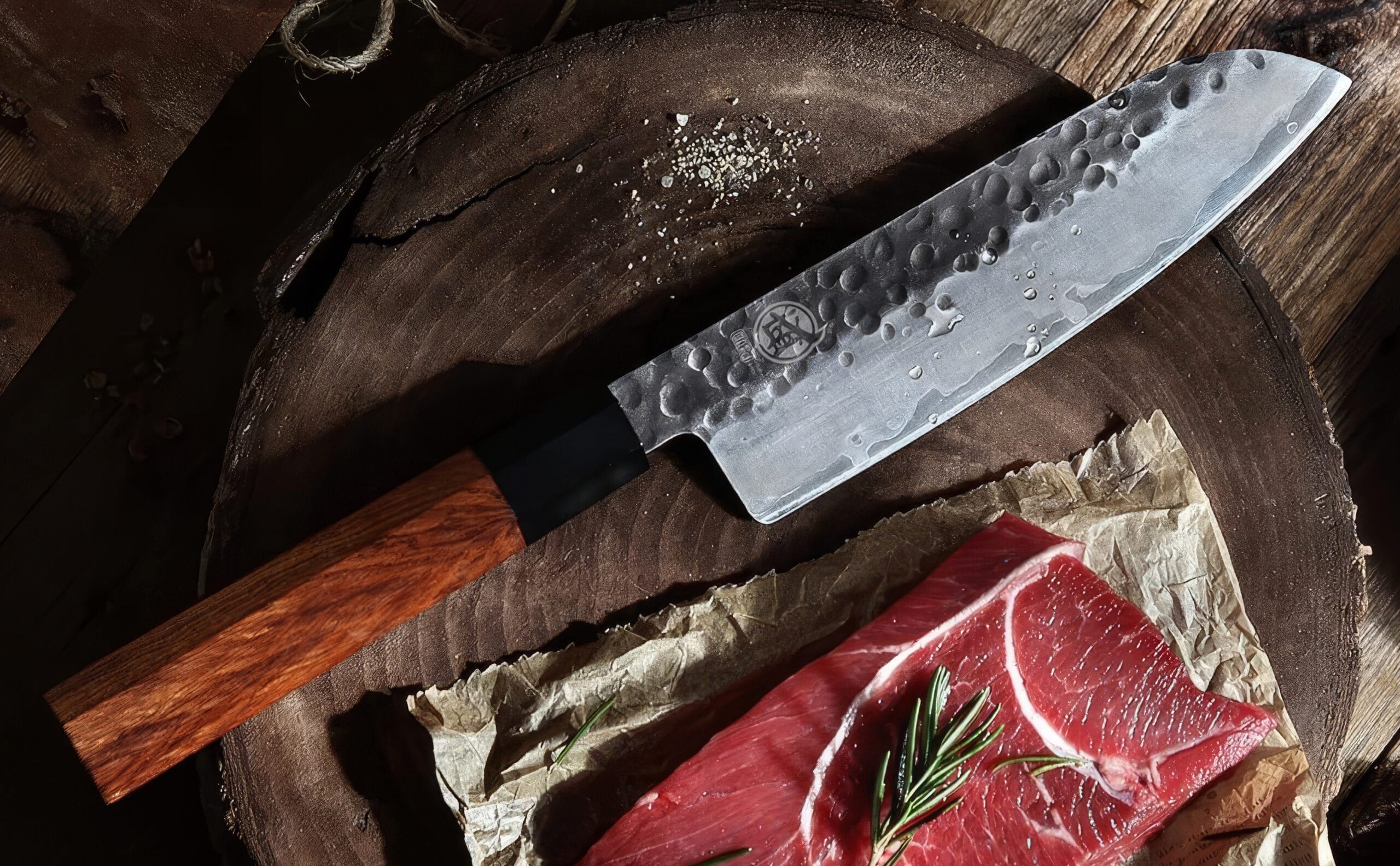
The santoku is another versatile all-purpose knife that has gained popularity in recent years. Its name translates to “three virtues,” referring to its ability to handle meat, fish, and vegetables with ease.
Santoku knives have a wide, sheepsfoot-shaped blade that is typically shorter than a gyuto, ranging from 150mm to 180mm in length. The blade has a nearly straight edge with a slight curve at the tip, making it suitable for both chopping and slicing.
Compared to gyuto knives, santoku knives have a more balanced weight distribution and a slightly thicker blade, which some users find more comfortable and easier to control. However, the choice between a gyuto and a santoku often comes down to personal preference and cutting style.
Choosing the Right Japanese Kitchen Knife
When selecting a Japanese kitchen knife, there are several key factors to consider to ensure you invest in a high-quality tool that meets your needs and preferences.
Blade Material
Japanese kitchen knives are typically made from one of three types of steel: carbon steel, stainless steel, or high-carbon stainless steel.
- Carbon steel: Known for its exceptional sharpness and ease of sharpening, carbon steel is a favorite among professionals. However, it is prone to rust and discoloration if not properly maintained.
- Stainless steel: More resistant to rust and corrosion, stainless steel knives are easier to care for but may not achieve the same level of sharpness as carbon steel.
- High-carbon stainless steel: A hybrid of carbon and stainless steel, this material offers the best of both worlds – excellent sharpness and good rust resistance.
| Property | Carbon Steel | Stainless Steel | High-Carbon Stainless Steel |
|---|---|---|---|
| Pros | Exceptionally sharp, easy to sharpen, develops a patina over time | Highly resistant to rust and corrosion, low maintenance | Combines the best properties of carbon and stainless steel, sharp and easy to maintain |
| Cons | Prone to rust and discoloration, requires frequent maintenance | Difficult to sharpen, may not achieve the same level of sharpness as carbon steel | May be more expensive than other options, requires some care to prevent corrosion |
| Sharpness | ⭐⭐⭐⭐⭐ | ⭐⭐⭐ | ⭐⭐⭐⭐ |
| Ease of Sharpening | ⭐⭐⭐⭐⭐ | ⭐⭐ | ⭐⭐⭐⭐ |
| Rust Resistance | ⭐ | ⭐⭐⭐⭐⭐ | ⭐⭐⭐⭐ |
| Maintenance Requirements | ⭐⭐⭐⭐⭐ | ⭐⭐ | ⭐⭐⭐ |
For beginners, high-carbon stainless steel is often recommended as it provides a balance of performance and ease of maintenance.
Handle Design and Material
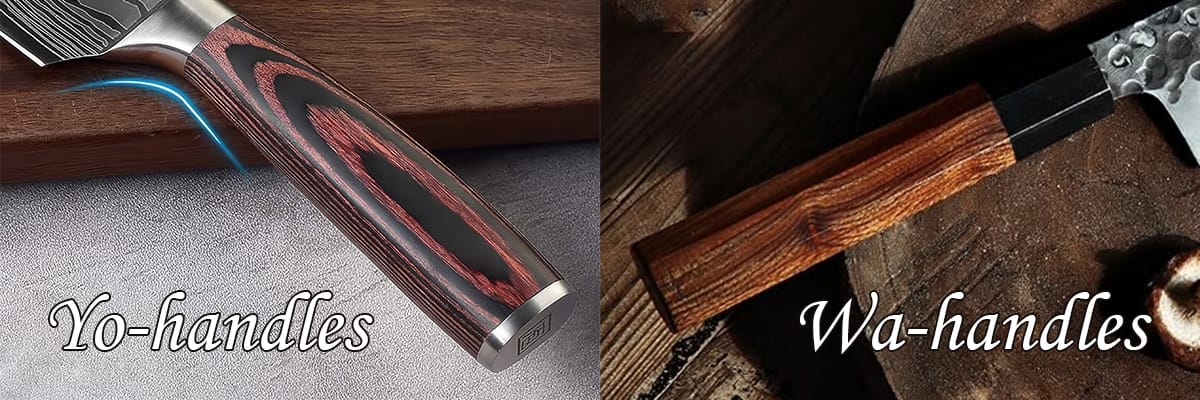
Japanese kitchen knives come with two main handle styles: traditional Japanese handles (wa-handle) and Western-style handles (yo-handle).
- Wa-handles are typically made from lightweight wood and have a straight, cylindrical shape that extends into the blade’s tang.
- Yo-handles are often made from wood, plastic, or composite materials and have a curved, ergonomic shape with a full tang construction.
The choice between wa-handles and yo-handles largely depends on personal preference and comfort. It’s essential to choose a handle that feels secure and comfortable in your grip, as this will affect your control and precision when cutting.
Blade Hardness and Sharpness
Japanese kitchen knives are renowned for their exceptional sharpness, which is attributed to the hardness of the steel used in their construction. The hardness of a blade is measured on the Rockwell scale (HRC), with higher numbers indicating a harder steel.
Japanese knives typically have a hardness ranging from 60 to 63 HRC, compared to Western knives which usually fall between 56 and 58 HRC. The harder steel allows for a sharper edge that retains its sharpness longer. However, harder blades are also more brittle and prone to chipping if used improperly.
When choosing a Japanese knife, it’s crucial to prioritize sharpness, as a sharp blade not only performs better but is also safer to use, requiring less force and reducing the risk of slips and accidents.
Discover the ideal kitchen knife dimensions for your culinary needs in this comprehensive guide.
Brand Reputation and Craftsmanship
Japan has numerous renowned knife-making regions, each with its own unique style and traditions. Some of the most famous Japanese knife brands include:
- Shun – Known for their beautiful Damascus-clad blades and exceptional craftsmanship.
- Global – Recognized for their lightweight, one-piece stainless steel construction and modern design.
- Mac – Favored by professionals for their razor-sharp edges and durable construction.
- Tojiro – Offers excellent value for money with their high-quality, entry-level knives.
When investing in a Japanese kitchen knife, it’s essential to consider the brand’s reputation and commitment to craftsmanship. Handmade knives crafted by skilled artisans often exhibit superior quality control and attention to detail compared to mass-produced options.
Price and Budget Considerations
Japanese kitchen knives are available at various price points, ranging from entry-level options to high-end, handcrafted masterpieces. As a general rule, you can expect to spend between $50 and $200 for a good quality, basic Japanese kitchen knife.
When starting, it’s recommended to invest in a versatile santoku, as these will handle most of your cutting needs. As you gain experience and develop your skills, you can expand your collection with more specialized knives.
Remember, investing in a quality Japanese kitchen knife is a long-term commitment. With proper care and maintenance, a well-crafted knife can last a lifetime, making it a worthwhile investment for any serious home cook or professional chef.
Must-Have Japanese Knife for Your Kitchen
When starting your collection of Japanese kitchen knives, one essential knife that every home cook should invest in is the versatile and reliable santoku. This multi-purpose knife can tackle a wide range of cutting tasks, making it a must-have tool in any kitchen.
Santoku (Three Virtues Knife)
The santoku, which translates to “three virtues” or “three uses,” is a Japanese all-purpose kitchen knife designed for slicing, dicing, and mincing. Its wide, straight blade and sheepsfoot tip allow for precise, clean cuts through vegetables, fruits, and meats.
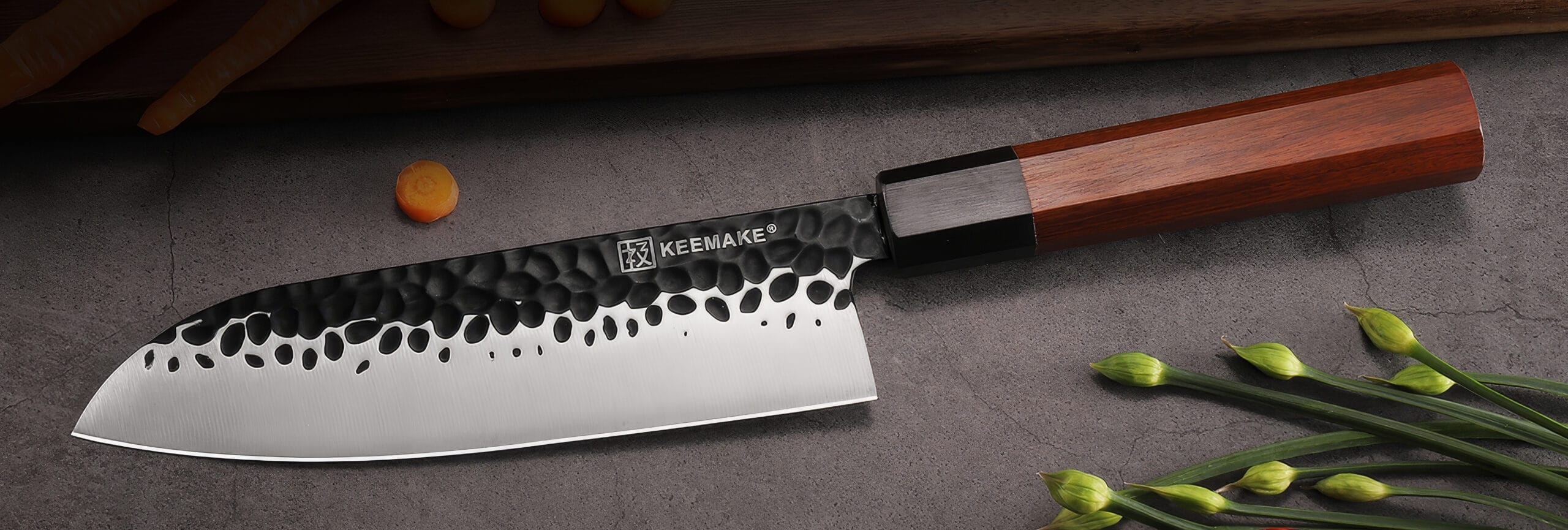
Key features of a santoku include:
- Blade length: Santoku knives typically have a blade length between 150mm and 180mm, with 165mm being a common size for home cooks.
- Blade shape: The santoku has a wide, straight blade with a slight curve at the belly and a sheepsfoot tip, which is ideal for making downward cuts and maintaining consistent contact with the cutting board.
- Granton edge: Some santoku knives feature a Granton edge, which has small scalloped divots along the blade to reduce friction and prevent food from sticking.
While both the santoku and gyuto are versatile, all-purpose kitchen knives, there are several reasons why the santoku is considered more essential for home cooks, especially those new to Japanese knives:
- Blade shape and size: The santoku’s wide, straight blade and shorter length (typically 165mm) make it easier to handle and control compared to the longer, curved blade of the gyuto (usually 210mm or more). This makes the santoku more approachable for beginners and those with smaller hands.
- Cutting technique: The santoku’s blade shape is designed for a simple up-and-down chopping motion, which is more intuitive for most home cooks. In contrast, the gyuto’s curved blade is better suited for rocking cuts, which may require more practice and skill to master.
- Versatility: While both knives are multi-purpose, the santoku’s balanced design allows it to excel at a wider range of tasks, from slicing and dicing vegetables to mincing herbs and even cutting through smaller bones. The gyuto, with its longer blade, is more specialized for slicing and may be less efficient for certain precision tasks.
- Space-saving: The santoku’s compact size makes it a more practical choice for home cooks with limited kitchen space or smaller cutting boards. It can easily handle most everyday cutting tasks without taking up too much room in your knife block or drawer.
- Price point: Generally, santoku knives are more affordable than gyutos, making them a more accessible entry point for home cooks looking to invest in their first high-quality Japanese knife without breaking the bank.
When choosing a santoku, consider the following factors:
- Blade material: Opt for high-carbon stainless steel or stainless steel for a balance of sharpness, durability, and ease of maintenance.
- Handle comfort: Look for a santoku with a comfortable handle that fits well in your hand, such as a traditional wooden handle or a modern synthetic handle with an ergonomic design.
- Brand quality: Invest in a santoku from a reputable Japanese knife maker, such as Shun, Miyabi, or Global, to ensure excellent craftsmanship and performance.
A well-crafted santoku is a valuable investment for any home cook looking to explore the world of Japanese kitchen knives. Its versatility, precision, and ease of use make it an excellent choice for both beginners and experienced cooks alike. With proper care and maintenance, a high-quality santoku will become a trusted companion in your kitchen for years to come.
While both the santoku and gyuto have their merits, the santoku’s user-friendly design, versatility, and affordability make it a more essential knife for most home cooks, and the most practical and valuable choice for your everyday kitchen needs.
Caring for Your Japanese Kitchen Knives
Proper care and maintenance are essential for ensuring the longevity and performance of your Japanese kitchen knives. By following these guidelines, you can keep your knives in top condition and enjoy their exceptional craftsmanship for years to come.
Proper Knife Storage

Storing your knives properly is crucial for protecting their delicate edges and preventing damage. Avoid storing your knives in a drawer where they can bump against other utensils, as this can dull or chip the blades.
Instead, consider using a knife block, magnetic strip, or sheath to store your knives safely. Knife blocks and magnetic strips keep your knives organized and easily accessible while protecting the blades from damage. Sheaths are ideal for storing individual knives and protecting them during transport.
When storing your knives, always ensure they are clean and dry to prevent rust and corrosion.
Sharpening and Honing Techniques
Maintaining the sharpness of your Japanese kitchen knives is key to their performance and longevity. It’s important to understand the difference between sharpening and honing.
- Sharpening involves removing material from the blade to create a new, sharp edge. This is typically done with a whetstone or sharpening stone.
- Honing, on the other hand, involves realigning the microscopic teeth on the blade’s edge to maintain its sharpness between sharpenings. This is usually done with a honing steel or ceramic rod.
For Japanese knives, it’s recommended to use a whetstone for sharpening, as this allows for precise control over the angle and pressure applied to the blade. A 1000/6000 grit combination stone is a good starting point for most users.
When sharpening, maintain a consistent angle between the blade and the stone, usually between 10 and 15 degrees for Japanese knives. Use a light touch and let the stone do the work, alternating sides until a burr forms along the edge.
Honing can be done more frequently, ideally before each use, to keep the edge aligned and sharp. Use a light touch and a slightly higher angle than when sharpening, around 20 degrees, and alternate sides with each stroke.
For a step-by-step guide on sharpening Japanese knives, check out this video:
Cleaning and Maintenance
To keep your Japanese kitchen knives in top condition, it’s essential to clean and maintain them properly.
- Always hand wash your knives with mild dish soap and warm water immediately after use. Avoid leaving them in the sink or submerging them in water for extended periods, as this can lead to rust and corrosion.
- Dry your knives thoroughly with a clean towel or air dry them before storing to prevent water spots and rust.
- For carbon steel knives, apply a thin layer of food-grade mineral oil to the blade before storing to prevent oxidation and discoloration.
- Avoid putting your Japanese knives in the dishwasher, as the harsh detergents, high temperatures, and jostling can damage the blades and handles.
Handling and Safety Tips
Using proper cutting techniques and following safety guidelines are essential for getting the most out of your Japanese kitchen knives and preventing accidents.
- Always use a pinch grip when holding your knife, with your thumb and index finger gripping the blade just in front of the handle. This provides better control and stability compared to a handle grip.
- Cut on appropriate surfaces such as wood or plastic cutting boards. Avoid cutting on hard surfaces like glass, marble, or stainless steel, as this can dull or damage the blade.
- Be mindful of the foods you cut with your Japanese knives. Avoid cutting through hard materials like bones, frozen foods, or tough squash, as this can chip or break the delicate blades.
- Keep your fingers tucked away from the blade when cutting, using the knuckle of your non-knife hand as a guide for the blade.
- Always pay attention when using your knives and avoid distractions. A sharp knife is safer than a dull one, as it requires less force and is less likely to slip.
By following these care and handling guidelines, you can ensure that your Japanese kitchen knives remain in excellent condition and perform at their best for years to come.
FAQs
What is the difference between Japanese and Western kitchen knives?
Japanese knives are typically thinner, harder, and sharper than Western knives. They are designed for precise, clean cuts and often have a single bevel edge. Western knives are usually thicker, softer, and have a double bevel edge, making them more versatile and durable.
Do I need to buy a whole set of Japanese kitchen knives?
No, you don’t need a full set of Japanese knives to get started. Begin with a versatile chef’s knife or santoku, and expand your collection as you gain experience and identify your specific needs.
How often should I sharpen my Japanese kitchen knives?
The frequency of sharpening depends on how often you use your knives and what you cut with them. As a general rule, aim to sharpen your knives every 2-3 months, or whenever you notice a decline in performance.
Can I put my Japanese kitchen knives in the dishwasher?
No, it’s not recommended to put your Japanese knives in the dishwasher. The harsh detergents, high temperatures, and jostling can damage the blades and handles. Always hand wash and dry your knives immediately after use.
How do I store my Japanese kitchen knives?
Store your knives in a knife block, on a magnetic strip, or in individual sheaths. Avoid storing them in a drawer where they can bump against other utensils and become damaged.
Conclusion
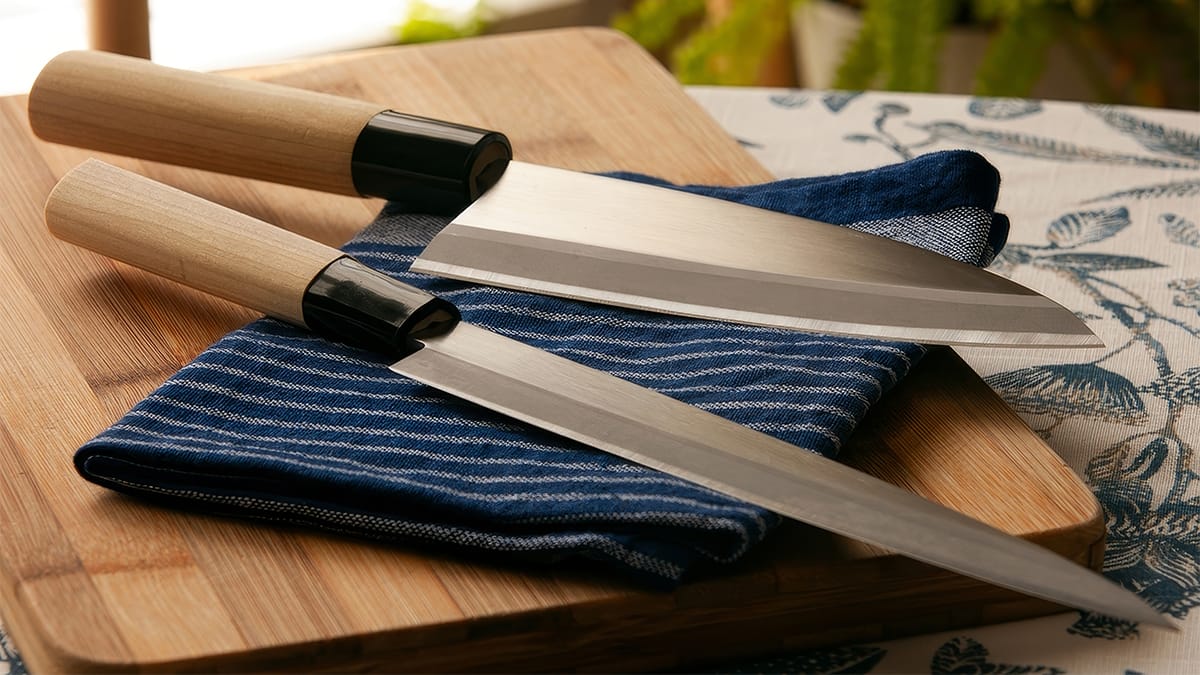
Japanese kitchen knives are more than just tools; they are an investment in your culinary journey and a reflection of the rich history and craftsmanship behind their creation. By investing in these timeless tools and learning to use and care for them properly, you’ll not only improve your culinary skills but also connect with a rich cultural heritage that values precision, beauty, and the pursuit of perfection. Embrace the art of Japanese knife-making, and let these exceptional tools become an integral part of your kitchen and your cooking journey.
For more fascinating insights into the world of kitchen knives, be sure to explore the extensive resources available on World Kitchen Tools. Happy cooking!
